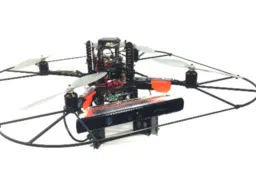Researchers have shown how mutations in a key gene cause a rare but devastating inherited autoimmune disease – APS-1. They’ve revealed fundamental workings of our immune system – and how our bodies teach our defence systems not to engage in friendly fire.
“In APS-1, there is a severe autoimmune response where the body’s white blood cells attack multiple organs leading to a host of diseases including diabetes, hepatitis, infertility and blindness,” says Adrian Liston, a researcher with Professor Chris Goodnow’s team at the John Curtin School of Medical Research at the Australian National University.
Earlier this year the team discovered how a key gene controls the thymus – allowing it to mimic every part of the body, thereby teaching white blood cells (T-cells) not to attack our own tissues and organs. They found that an autoimmune regulator gene (called the Aire gene) controls this process.
Now, working with a mouse model, Adrian has shown that mutations in the Aire gene lead directly to autoimmune disease and diabetes. “This explains why humans with mutations in Aire develop APS-1,” he says.
“When both copies of the Aire gene are mutated, the thymus is unable to mimic key organs. The T-cells are no longer taught to ignore the body, so when they enter the blood they start to infiltrate multiple organs, destroying them with a severe autoimmune response,” he says.
“We’ve also discovered that, in mice, inheriting even a single copy of the mutated gene increase their susceptibility to diabetes. This suggests that human carriers of the mutation are likely to be at greater risk of less severe, but more common autoimmune diseases such as Type I diabetes,” says Adrian.
These finds are vital steps in our understanding of APS 1 (more fully known as Autoimmune Polyendocrinopathy Syndrome 1), diabetes and other autoimmune diseases.
The research team has also found another set of mutations that disrupt the same pathway in in a strain of naturally diabetic mice. Instead of stopping the thymus from mimicking the pancreas, the ‘NOD’ mutations allow the T-cells leave the thymus before they are properly trained.
The researchers at ANU have now undertaking a ‘genome-wide scan’ to look for any other mutations in the entire mouse genome that are capable of causing autoimmune disease.
Adrian is presenting his research to the public for the first time thanks to Fresh Science, a national program to bring public attention to the remarkable unsung achievements of young Australian scientists. He will be speaking to the public and school students about his work on Tuesday 19 and Wednesday 20 August at the Melbourne Museum.
Researchers at the John Curtin School of Medical Research in Canberra have identified the cell defect that leads to a rare but devastating form of diabetes.
Prof Chris Goodnow
Medical Genome Centre
The researchers have shown that Autoimmune Polyendocrine Syndrome 1, where the body’s immune system attacks a range of normal organs, results from a failure to destroy “forbidden T cells” that react against our own bodies.
The researchers believe that inherited alterations at various steps in the same mechanism for deleting forbidden clone causes common forms of diabetes and other autoimmune diseases.
The results of the study were published today in the prestigious journal, Nature Immunology.
The Molecular Analysis of Pathways in Diabetes (MAPDB) research team, funded by the Juvenile Diabetes Research Foundation and the National Health and Medical Research Council and led by Professor Chris Goodnow, is identifying genes and molecular mechanisms regulating diabetes using the recently sequenced human and mouse genome. In the work announced today, the researchers focussed on a gene called AIRE that was identified by European and Japanese researchers as part of the human chromosome 21 sequencing project. People with defects in the AIRE gene develop numerous autoimmune diseases, including diabetes, thyroid disease, adrenal gland insufficiency, and infertility. What remained a mystery, however, was why AIRE gene defects caused such severe immunological disease.
The Canberra research team, in collaboration with researchers in Finland, took advantage of the fact that the AIRE gene is almost identical in humans and mice. Using genetically engineered mice, they were able to trace the formation of immune cells called T cells that are produced in the thymus gland. Some of these T cells carry receptors against proteins made in the insulin-producing cells of the pancreas, and these “forbidden clones”are normally destroyed before they can leave the thymus, so that they cannot attack the pancreas. When the AIRE gene is defective, however, these forbidden cells fail to be destroyed and circulate through the body, setting the stage for a subsequent attack on the pancreas.
The identification of defects in this mechanism for purging forbidden T cells will focus research on developing ways to detect and correct abnormalities at different points in the purging process, to prevent diabetes from starting or progressing, and to improve methods for curing the disease by pancreas islet cell transplantation.
Adrian Liston
Doctoral candidate John Curtin School of Medical Research
New gene ‘Aire’ able to prevent diabetes
The role of Aire in central tolerance towards organ-specific antigens
Helper T cells are the directors of the human immune system. They are the cells that make the decision as to what is ignored and what is attacked. We have discovered how helper T cells are taught to ignore the human body and prevent autoimmune disease works. Any mutations in this key pathway cause rampant autoimmunity such as diabetes.
Project description
When microbes attack the human body, 100 billion white cells circulating around our blood come to our defence. Dendritic cells act as surveillance cameras, neutrophils attack kamikaze-style, eosinophils tackle the big prey, B cells make antibodies to clear the blood, and killer T cells seek out those that hide within our cells. But the most important cells, the ‘brains’ behind the immune response, are helper T cells. They are microscopic machines perfectly designed to recognise anything foreign, and then co-ordinate all the other white blood cells into a full-scale war to destroy the invader.
Unfortunately, in many people the helper T cells get it all wrong. Instead of recognising foreign microbes, they start a war upon our own body. The white blood cells are so potent that they are able to destroy vital organs causing ‘autoimmune diseases’ such as diabetes, multiple sclerosis and rheumatoid arthritis.
Our research is focused on genes that teach the helper T cells the difference between self-proteins and foreign microbes (non-self), and how they can go wrong in some people. We have been working on a very potent diabetes gene called Aire, recently found mutated in people with an extreme form of diabetes. To work out why Aire is essential we bred a transgenic mouse with a mutation in Aire.
The Aire mutant mouse has taken us deep into the development of helper T cells. Helper T cells develop in the thymus where they learn to ignore common self-proteins. However they cannot learn to ignore proteins that are not found in the thymus. This has given the long-standing dilemma about how T cells learn to ignore proteins like insulin (which is only found in the pancreas), which is the target during diabetes.
The Aire mutant mouse has turned out to be the key to this dilemma. Work on the mutant mouse has shown us is that Aire is uniquely able to cause the development of small patches of organs inside the thymus. This “body within abody” (like the 19 th century idea that sperm contained a ‘homunculus’ or miniature person inside) allows developing helper T cells to see all the proteins in the body, not just the common ones, giving an all-encompassing education. In people with mutations in Aire, the helper T cells only get the basic education, so they can mistake a protein like insulin for an invading microbe, and destroy the pancreas causing diabetes.
Personal details
Qualifications: Bachelor of Science (Biomedical Science). Adelaide University 2000. Honours (Molecular BioScience) Adelaide University 2001, Current enrolled in PhD program at ANU (2002 to current)




 Fresh Science is on hold for 2022. We will be back in 2023.
Fresh Science is on hold for 2022. We will be back in 2023.